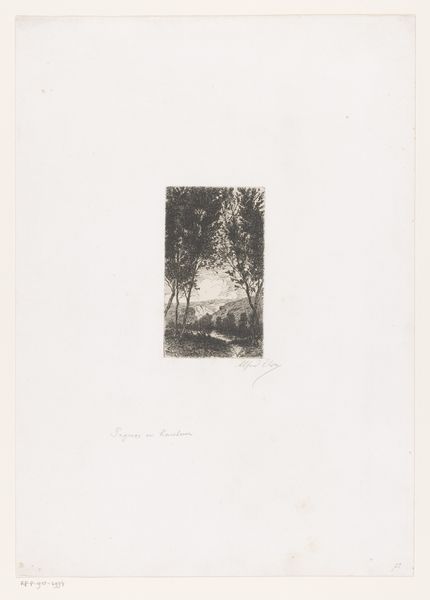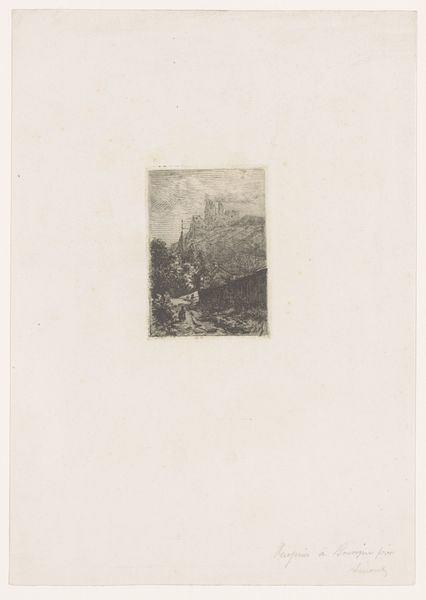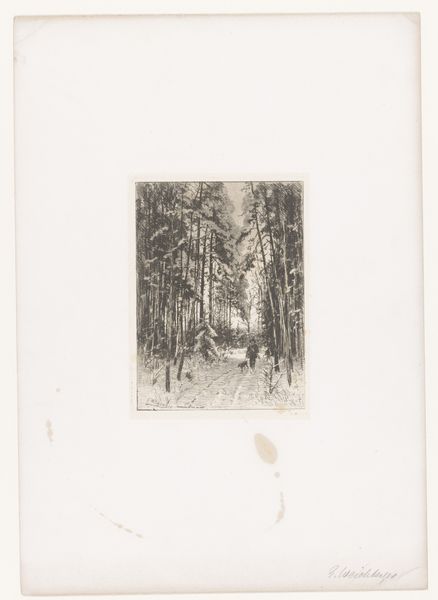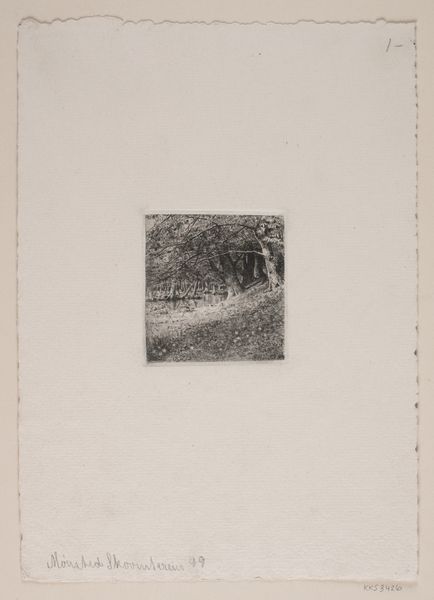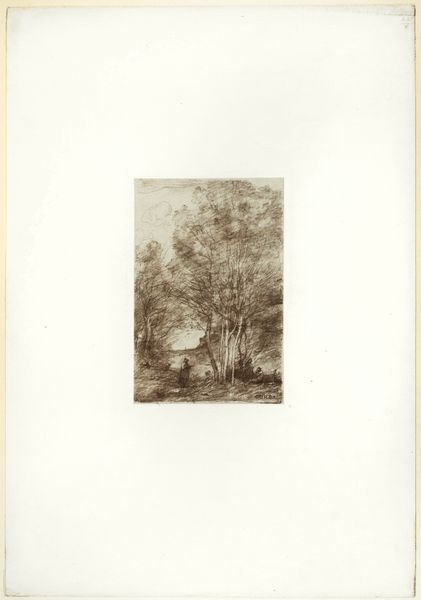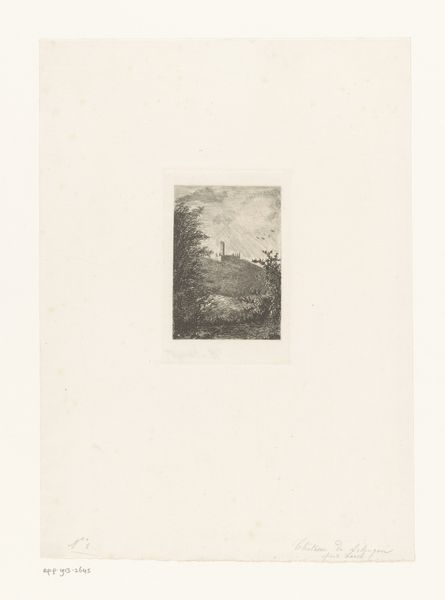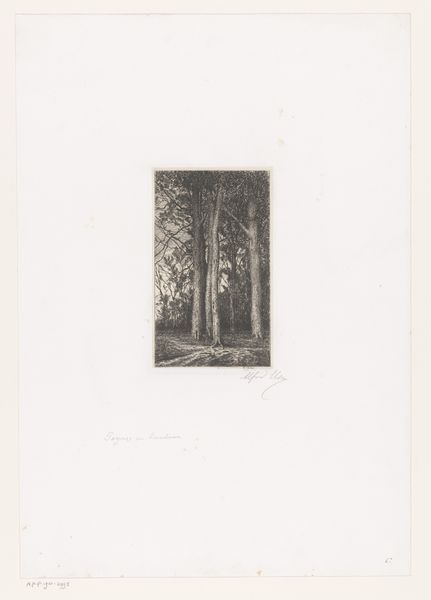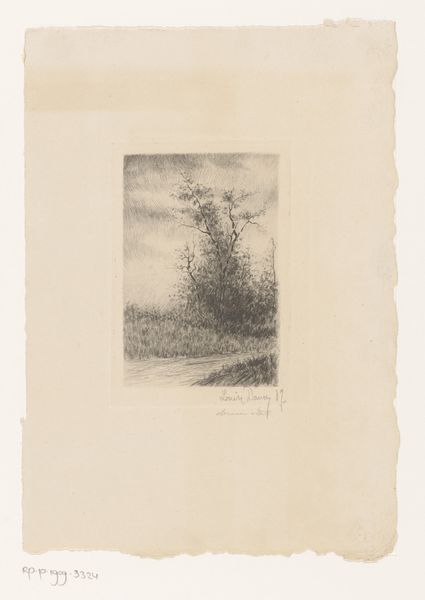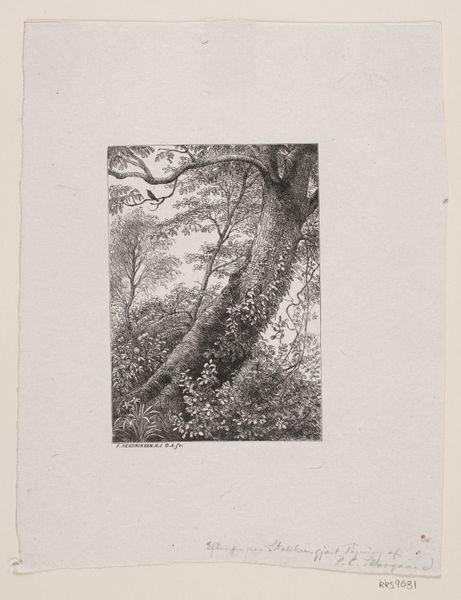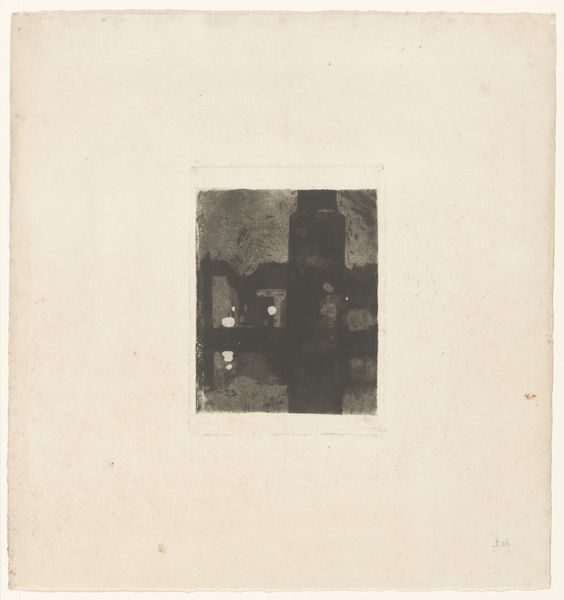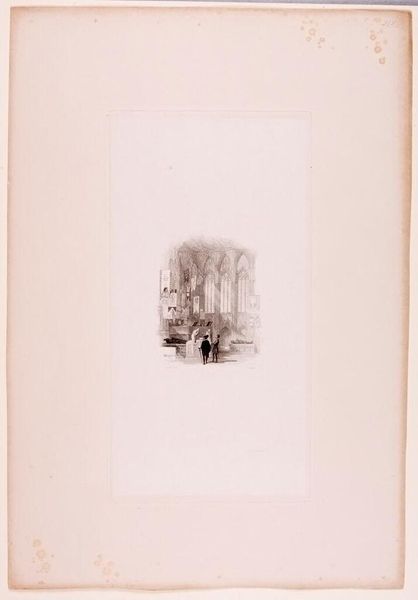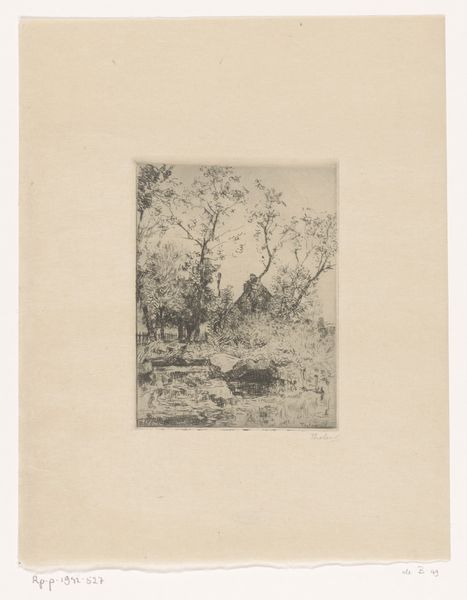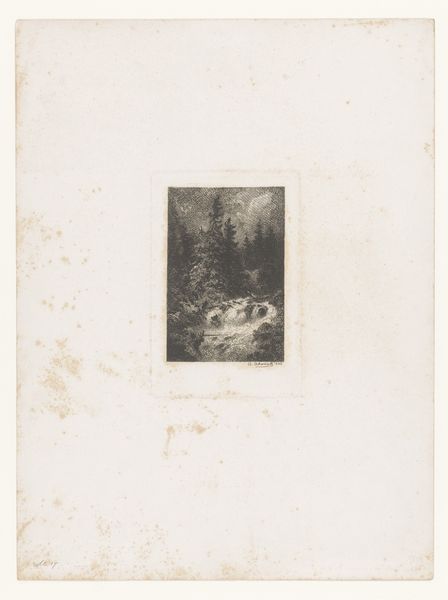
print, etching
# print
#
impressionism
#
etching
#
landscape
#
forest
#
realism
Dimensions: height 135 mm, width 90 mm
Copyright: Rijks Museum: Open Domain
Editor: Here we have "Bosgezicht bij maneschijn," a print, more precisely an etching, dating from between 1860 and 1910, currently at the Rijksmuseum. I am immediately struck by the quiet mood; it is intimate but also seems somewhat secretive. How do you interpret this work? Curator: I see this piece as more than just a landscape; it’s a socio-political statement. The lone figure seemingly observing or working implies the complex relationship between labor and environment in 19th-century Netherlands. The forest, illuminated by the moon, isn't just scenery; it symbolizes both refuge and potential resource for a society undergoing rapid industrialization. Consider who had access to such spaces, and who was excluded. Editor: So, are you suggesting that the artist consciously chose this subject matter to represent certain power dynamics? Curator: Precisely. The very act of depicting this scene can be read as a commentary on land ownership and usage during a time of stark social inequalities. Was this land public or private? Who benefited from the forest's resources, and who faced exploitation? How do we see the representation of nature, not simply as beautiful, but deeply connected to social issues and class? Editor: It's interesting that you mention this, because at first glance, I didn't consider how wealth and societal structures impacted the art or the very act of seeing that art in the first place. I appreciate that perspective, because art provides a great framework for current-day discussions about similar societal patterns that still take place. Curator: Exactly! This print invites us to consider whose stories are told, and whose are often left untold, through art, echoing complex political narratives from past to present.
Comments
No comments
Be the first to comment and join the conversation on the ultimate creative platform.
